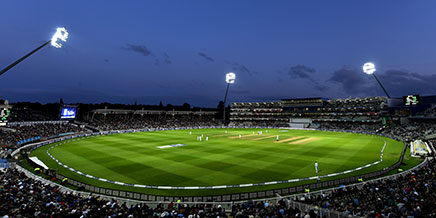
Making sport stadiums EPC-compliant in South-Africa
The EPC regulations published in December 2020 mandate the display of an Energy Performance Certificate (EPC) for all sport facilities such as stadiums larger than 1 000m2 (if they are state-owned) or 2 000m2 (if they are privately-owned). With the December 2022 deadline for compliance with the regulations looming, owners of these properties should already be taking steps to ensure that they obtain certification for their facilities.
Getting a sport facility certified does not have to be an intimidating exercise. The selection and appointment of a SANAS accredited EPC inspection body is the first step. A list of such inspection bodies can be found on the SANAS website, as well as on the SANEDI website.
A question that is often asked is how the energy performance of a stadium can be improved?
Globally, there have been moves to embrace the development of more energy efficient stadiums. When new stadiums are built, they feature these innovations by design while existing stadiums can be retrofitted to fit modern sustainability standards.
There are plenty of global examples of stadiums embracing a more energy-sensitive approach. For instance, San Francisco’s AT&T Ballpark installed solar arrays to provide enough power to supply more than 5 000 homes in the area. The multi-purpose Lumen Field in Seattle launched a composting programme and added 200 new recycling bins. Furthermore, they also became certified as an Energy Star Portfolio Manager partner.
However, the one which many other stadium managers and property owners turn to for inspiration is Seattle’s Climate Pledge Arena. It uses 100% sustainable energy, and all its electric operations and composting and recycling programmes are focused on being environmentally friendly. The stadium’s ice hockey rink is made up of recycled rainwater, captured in a gigantic 57 000 litre underground cistern.
In South Africa, where the electricity grid is under significant pressure, many stadiums have turned their attention to generators, solar power, and other alternatives to keep the proverbial lights running during events. Additionally, decreasing the consumption of water and electricity at a stadium will result in improved cost efficiencies with the additional funds being used to invest in other areas. This means the likes of the Vodacom Bulls or Orlando Pirates and others can focus on improving their line-ups and team performance while worrying less about the energy usage of the stadiums.
Of course, EPCs are not only limited to stadiums. All the relevant occupancy classes for an EPC are as follows:
- A1 – Entertainment and public assembly (occupancy where persons gather to eat, drink, dance or participate in recreation)
- A2 – Theatrical and indoor sport (occupancy where persons gather for the viewing of theatrical, operatic, orchestral, choral, cinematographical or sport performances)
- A3 – Places of instruction (occupancy other than primary or secondary schools, where students or other persons assemble for the purpose of tuition or learning and occupancy where school children assemble for the purpose of tuition or learning)
- G1 – Offices (large multi-storey office buildings, banks, consulting rooms and similar uses with lifts and energy consuming services that operate on a typical daytime occupancy and stand-alone blocks and / or campus of buildings that form and office park but operate separately)
Contact Remote Metering Solutions (RMS), an innovator in the utility management sector, to find out if your stadium requires an EPC and what the steps are to becoming compliant.

